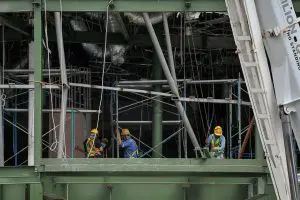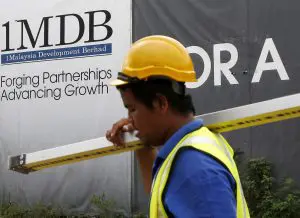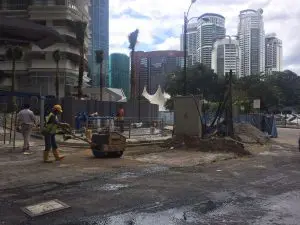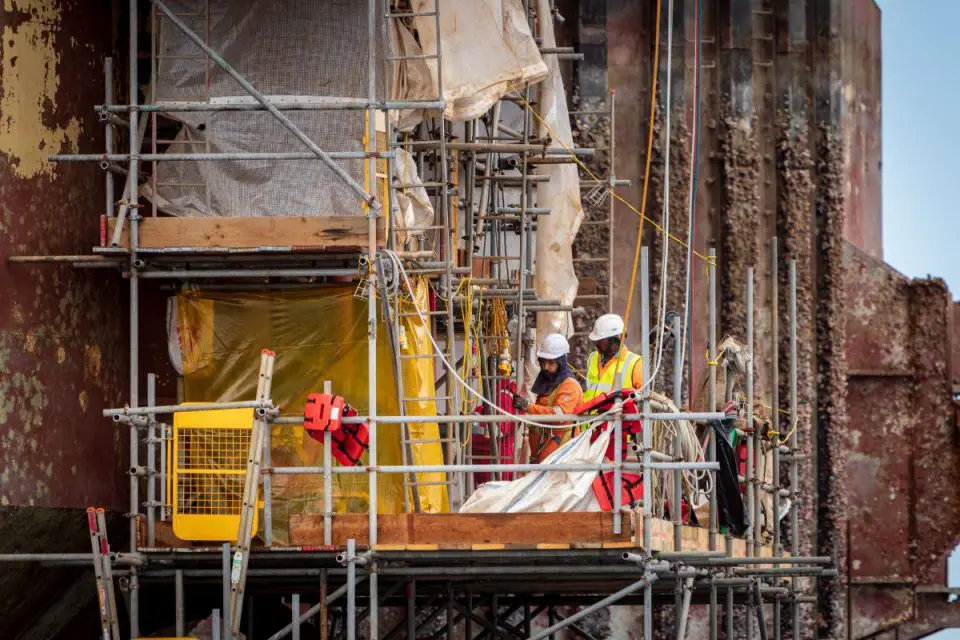KUALA LUMPUR, Nov 30 — The revival of several mega infrastructure projects has provided the much-needed impetus to the Malaysian construction sector, driving the construction stocks index on Bursa Malaysia to a two-year high by 20.74 per cent year-to-date (Nov 27) as well as the industry to post stronger growth.
The Construction Index on the exchange stood at 184.19 on Nov 27, 2023, as compared with 152.51 in January 2023. The previous time the index exceeded the current level was on April 14, 2021, at 188.58.
The acceleration of mega projects by the government, especially the rail and road network infrastructure, was the catalyst for the construction sector as it boosted mobility and stimulated economic activities along the route.
This was in line with the call by Prime Minister Datuk Seri Anwar Ibrahim to expedite government development and infrastructure projects while simplifying processes between the federal and state governments.
Among the key infrastructure projects in the country are the 5G rollout, the East Coast Highway 3, flood-mitigation projects, the West Coast Expressway, the East Coast Rail Link, the Central Spine Road, Mass Rapid Transit 3 (MRT3), Bayan Lepas Light Rapid Transit (BLLRT) in Penang, the remaining Pan Borneo Highway, and the Johor-Singapore Rapid Transit System.

Better performance
Following the acceleration of several mega infrastructure projects as announced by the government, the future looks promising for the sector amid fresh jobs being awarded to local construction companies.
In the first quarter of 2023, the construction sector registered a positive momentum year-on-year, with the value of work done expanded by 9.4 per cent to RM32.2 billion, supported by double-digit growth in the civil engineering sub-sector.
Subsequently, the value of work in the second quarter of2023 stood at 8.1 per cent, worth RM32.4 billion.
It rebounded in third quarter of2023 to record a 9.6 per cent growth versus in the second quarter, with works completed value of RM33.4 billion, driven again by double-digit growth in the civil engineering sub-sector.
According to the Department of Statistics Malaysia, the third quarter of performance marked the sixth consecutive quarter of science the second quarter of2022, in which a positive pace was sustained.
Meanwhile, the performance for the first nine months of 2023 was valued at RM98 billion, reflecting a 9.0 per cent increase compared to 6.6 per cent in the corresponding period last year.
Additionally, the majority of analysts believed that the sector is expected to continue registering strong growth in the fourth quarter of 2023 as well as for the full year of 2023, backed by an uptick in government-related projects and continued expansion in private-sector output.
The industry is also set to benefit from the revised 12th Malaysia Plan Mid-Term Review, in which the development expenditure ceiling is raised to RM415 billion from RM400 billion.
In view of this, London-based analytics company GlobalData, in its Construction Projects database, has listed five largest construction projects that are expected to kick start in the third quarter, namely the Penang chip packaging facility, the Klang Valley Double Track Rehabilitation: Phase II, the AirTrunk JHB1 Hyperscale Data Centre in Johor, the lithium battery production facility in Kedah and the Serendah solar photovoltaic manufacturing plant.
Construction
According to the Construction Industry Development Board (CIDB) Malaysia chief executive officer Datuk Mohd Zaid Zakaria, the board remained optimistic about the construction industry’s growth post-pandemic.
He said Malaysia had achieved its target construction value of RM150 billion in 2022 and was well on its way to achieving the same number in 2023.
“The value of work in Malaysia’s construction sector jumped by 9.6 per cent year-on-year in the third quarter of2023 to record a total of RM33.4 billion.”
Mohd Zaid said there were 9,144 construction projects as of September 2023, showcasing the vibrancy of the industry.
“These endeavours represent substantial investments, with RM63 billion dedicated to private initiatives and RM84 billion for government projects.
“Notably, 91 per cent of these projects are managed by local contractors, a testament to their expertise in shaping Malaysia’s infrastructure landscape,” he explained.
Positive outlook but challenges remain amid rising material cost, upskilling vital
Meanwhile, the increase in the price of building materials poses a challenge to the industry.
Mohd Zain said the sand price rose to RM45 per tonne in September 2023 from RM42 per tonne in January this year.
Similarly, the ready-mixed concrete price inched up to RM302 per cubic metric (m3) in September from RM280 per m3 in January.
The rising cost of logistics has also weighed on the overall cost of projects in the short and long term which will inevitably spill over to the end users, he pointed out.
In terms of the construction workforce, the industry currently has an adequate supply of general workers, but it is facing a shortage of skilled manpower, he said.
As such, he said CIDB is ready to support initiatives in training more local construction personnel in trades which are in high demand by the industry.
On the same note, the Master Builders Association Malaysia president Oliver HC Wee said that besides upskilling of labour, elements of compliance and governance should be emphasised.
“With regulations in place and sudden enforcements being enacted, the industry is subjected to an increase in costs resulting from matters such as scaffolding and employment issues,” he said.

Project updates
In the revised Budget 2023 tabled in February, Anwar who is also Finance Minister said the government intended to review the MRT3 project cost by reducing the total amount to below RM45 billion, as compared to the cost of RM68 billion quoted in 2018.
The review would represent an effort to lower procurement costs and achieve savings that can be redistributed for the people’s benefit.
As such, MRT3 is a project that construction players have been looking forward to, as analysts expect the mega rail project to be a fresh growth catalyst for the local construction industry after the completion of MRT2.
As for the BLLRT, the plan was for the initial line to run from Penang International Airport in Bayan Lepas to Komtar in George Town and onwards to Tanjung Bungah, while the next phase of the line would see the construction of a cross-channel link to Butterworth and onwards to Kepala Batas and Simpang Ampat on the mainland.
The first phase was estimated to cost RM10 billion as part of the Penang Transport Master Plan, but it is likely to be higher as the line seems to be extended to Tanjung Bungah.
However, to the disappointment of contractors, no project details have been announced as yet.
As for the Pan Borneo Highway project involving Sabah and Sarawak, Phase 1A of the project in Sabah is 85 per cent complete as of Oct 9, 2023, and is expected to be fully completed in 2025.
Phase 1B of the project, which will likely take five years to complete, will commence after the tender is finalised.
The Sabah side of the project involves 35 work packages along 706 kilometres which began in July 2016.
Meanwhile, the Sarawak side of work will be fully completed next year.

Budget 2024
During the Budget 2024 announcement on Oct 13, the government allocated RM72.7 billion for the implementation of government construction work, most of which included projects for school maintenance and repair, quarters, federal roads, public toilets and drains.
Of the total allocation, Sabah and Sarawak came out as the prime beneficiaries, as both states would receive higher development expenditures at RM6.6 billion and RM5.8 billion, respectively.
Construction companies which have prior involvement in various projects in the two states would likely benefit the most.
Among the projects would be the RM7.4 billion Sarawak-Sabah Link Road Phase 2 project which will commence at the end of this year.
As for Peninsular Malaysia, the North-South Expressway from Sedenak to Simpang Renggam would be extended from four to six lanes at a cost of RM931 million.
Budget 2024 also announced the revival of five stations for the Light Rail Transit Line 3 (LRT3) which was previously cancelled.
With this resumption, the project costing RM4.7 billion would benefit around two million residents.
As for the 5G rollout, the government announced plans earlier this year to transition to a dual network model once the current rollout under Digital Nasional Bhd reached 80 per cent target coverage of populated areas.
In the Dewan Rakyat on Oct 9, Communications and Digital Minister Fahmi Fadzil said a total of 5,873 5G sites were developed as of Sept 30, translating into a network’s populated areas of 70.2 per cent.
To sum up, Mohd Zaid said these projects under Budget 2024 would open up more opportunities for construction work for small and medium-sized contractors (G1 to G4) and further boost the country’s construction industry.
“We are expecting to see more projects to come from the private sector. Usually, about 60 per cent of construction values come from private projects.
“The implementation of these projects requires contractors and skilled construction personnel with recognised competency,” he added.
CIDB would provide the skills training needed for these projects, he said.
Sustainability
The construction industry is a significant contributor to carbon emissions and resource depletion with a multiplier effect of 2.03 per cent due to its connection with more than 120 different industries, of which 90 per cent of the firms comprise small and medium enterprises.
However, with the development of new technologies and sustainable practices, carbon emissions can be reduced.
To start the ball rolling, CIDB’s research and development arm, the Construction Research Institute of Malaysia (Cream), has signed a memorandum of understanding with YTL Cement Bhd to support the industry transition to sustainable construction.
Cream and YTL Cement will work together to increase awareness of the embodied carbon produced by the construction sector by providing channels for discussions and knowledge transfer among industry practitioners and experts.
— Bernama





